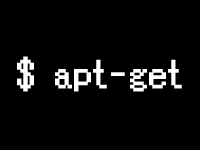Efficient Software Management with apt-get in Kali Linux
 Ruturajsingh Rahevar
Ruturajsingh RahevarTable of contents
- Apt:
- Updating the Package Database:
- Installing Packages:
- Upgrading Packages:
- Removing Packages:
- Searching for Packages:
- Listing Installed Packages:
- Displaying Package Information:
- Cleaning Up:
- Adding and Removing Repositories:
- dist-upgrade:
- Apt-get command not found :
- What does apt-get: command not found means ?
- Check your operating system
- How to fix apt-get command not found

Apt:
The apt (Advanced Package Tool) is a command-line package management tool used in Debian-based Linux distributions like Ubuntu,kali linux,linux.You can use it to install, update, and remove software packages, ensuring your system is up to date.
Here are some details about apt along with examples for each operation:
Updating the Package Database:
Before performing any package-related operations, it's a good practice to update the local package database to ensure you have the latest information about available packages.
sudo apt update
This command fetches information about the available packages and updates the local package database.
Installing Packages:
To install a package, use the apt install command followed by the package name. For example, to install the "curl" package:
sudo apt install curl
This command will download and install the "curl" package and any required dependencies.
Upgrading Packages:
You can upgrade installed packages to their latest versions using the apt upgrade command. To upgrade all packages:
sudo apt upgrade
Removing Packages:
To remove a package while keeping its configuration files intact, use the apt remove command. For example:
sudo apt remove curl
To completely remove a package, including its configuration files, use the apt purge command:
sudo apt purge curl
Searching for Packages:
To search for packages containing specific keywords in their name or description, you can use the apt search command. For example:
apt search text-editor
This will display a list of packages related to text editors.
Listing Installed Packages:
To list all installed packages on your system, you can use the apt list command. For a more concise list:
apt list
Displaying Package Information:
To get detailed information about a package, use the apt show command. For example:
apt show curl
This will provide information about the "curl" package, including its description, version, dependencies, and more.
Cleaning Up:
Over time, your system can accumulate cached package files. To clean up these cached files and free up disk space, use the following commands:
sudo apt clean # Removes downloaded package files
sudo apt autoclean # Removes obsolete package files
Adding and Removing Repositories:
You can add external software repositories to your system using the add-apt-repository command. For example:
sudo add-apt-repository ppa:example/repository
To remove a repository:
sudo add-apt-repository --remove ppa:example/repository
These are some of the most common apt commands and their examples.
dist-upgrade:
dist-upgrade in addition to performing the function of upgrade, also intelligently handles changing dependencies with new versions of packages; apt-get has a “smart” conflict resolution system, and it will attempt to upgrade the most important packages at the expense of less important ones if necessary.
sudo apt-get dist-upgrade
Apt-get command not found :
Apt-get is the package manager used by default in the Debian and Ubuntu distribution family. But still, some users encounter an apt get command not found error. we will examine why such an error occurs, how it can be at all, and how to fix the apt get command not found.
What does apt-get: command not found means ?
In fact, this error message means just what it tells us, the command you are trying to execute was not found on the system. It has either not yet been installed or has been removed. But all this sounds very strange in relation to the package manager. Consider the main causes of the error:
One of the most obvious reasons for getting the “apt get not found” error is that you do not have Ubuntu. This package manager is used only in Debian-based Linux distributions. Red Hat, CentOS, Fedora, OpenSUSE, CoreOS, Cloud Linux, ArchLlinux, and others are not. They have their own package manager, each has its own and it must be used to install packages, and not look for apt.
If you use the apt command rather than apt-get, then you may have an old distribution that does not support this syntax, use apt-get.
The second reason is because you accidentally or intentionally uninstalled the Apt package. He is no longer in the system, therefore, the system cannot find it.
The third reason may be the inability to detect the program. The apt utility is on the system and works fine, but you damaged the PATH environment variable and now the system does not search for executable files in the folder where apt is located.
Check your operating system
The APT packages are used in Debian operating systems and its derivatives. If you are getting the error message “apt-get : command not found ” please check the operating system you are working on. The “apt-get” will not work on RHEL and its derivatives like CentOS. These operating systems use the “yum” repository that contains all the software packages. To install packages in these operating systems, use the “yum” command.
Check the directories
Run the command:
locate apt-get
The following output should be displayed: /usr/bin/apt-get
If the command returns no output, then you have no “apt” package installed. You will have to install the apt package manually by accessing the “ /etc/apt/sources.list” file.
This file contains all the relevant links to install or upgrade packages. Choose the appropriate mirror from the list.
Now consider how to solve the problem. It is very simple.
How to fix apt-get command not found
In some rare cases, apt-get might be missing because the APT package itself is not installed. To install APT on a Debian-based system, you would need to use the package manager specific to your distribution. For example:
sudo apt install apt
Being a student is easy. Learning requires actual work💻✨
Subscribe to my newsletter
Read articles from Ruturajsingh Rahevar directly inside your inbox. Subscribe to the newsletter, and don't miss out.
Written by

Ruturajsingh Rahevar
Ruturajsingh Rahevar
Hello, I'm a Computer Science student at SVBIT Gandhinagar and I'm passionate about cybersecurity, Ethical Hacker, python, data structures, and algorithms. I enjoy learning new things and applying them to real-world problems.